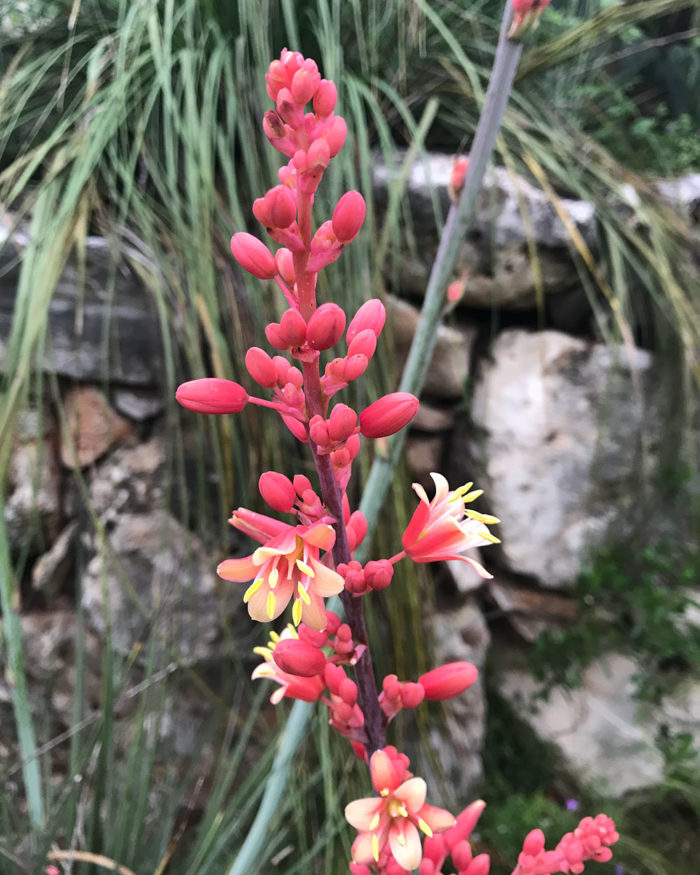
Rock gardens are appealing for their natural, rugged beauty. For areas with steep slopes, a rock garden can be an excellent way to add interest to retaining walls or rocky slopes. For gardens with little to no elevation change, the creation of a multilevel rock garden can add vertical interest to a previously flat landscape. We are fortunate to have many excellent plant selections available to us for our Southern Plains rock gardens. I’d like to highlight a few of my favorites, which cover a variety of forms, colors, and bloom periods. Despite their different forms, all of these perform well in dry, well-drained, rocky spaces. They are all drought tolerant and can take the heat and sunshine of our hot Southern Plains summers.
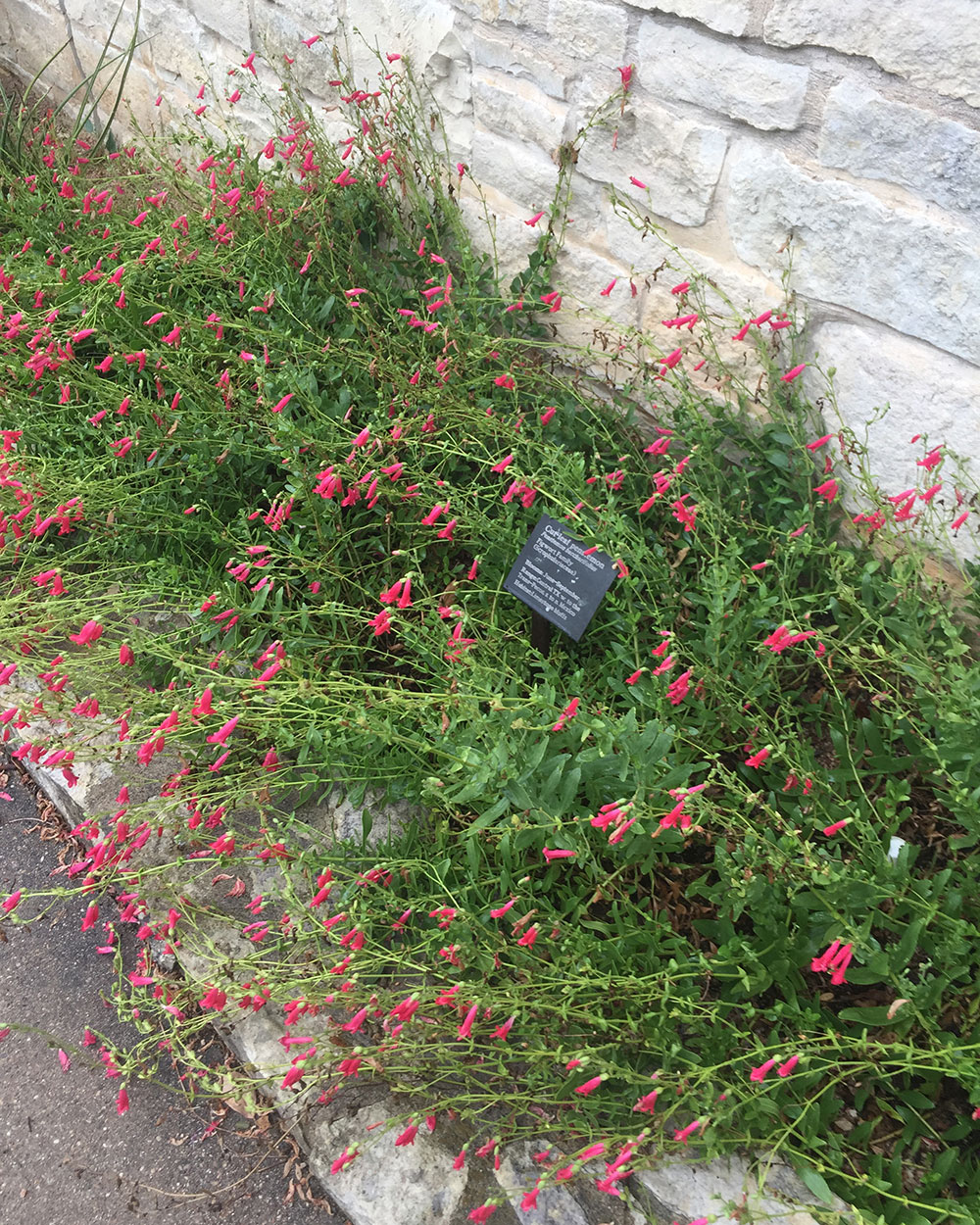
Rock penstemon
Rock penstemon (Penstemon baccharifolius, Zones 8–10) looks fabulous cascading over rock ledges. It has thick, dark green leaves that never look wilted in the summer heat, and bright red tubular flowers that are much loved by hummingbirds. Its general form is short and sprawling, no more than about 18 inches tall, but creeping over soil and rocks. If it gets too big or unruly for its allotted space, it can be cut back hard with hand pruners to no ill effect. It generally blooms from June to September, but I’ve seen it bloom outside of that season when conditions are just right.

Blackfoot daisy
Blackfoot daisy (Melampodium leucanthum, Zones 5–10) is a cheerful little white daisy in the sunflower family. It forms a round, bushy clump about 6 to 12 inches tall that bears 8 to 13 white flowers with yellow centers. It has a long bloom period, from approximately March to November, and is quite deer resistant. As a native perennial throughout the Southern Plains, it can survive winters even in Zone 5. It is best to not plant blackfoot daisy in an irrigated landscape because it will not tolerate too much water. Well-drained soil is crucial, and I almost never water this plant after establishment. In my experience, blackfoot daisy will “walk around” a bit in the garden, coming up in an adjacent area to where it was previously planted if it finds the conditions in the new area more to its liking. This is not to say that it is aggressive at all, only that it will seek out its ideal conditions nearby.
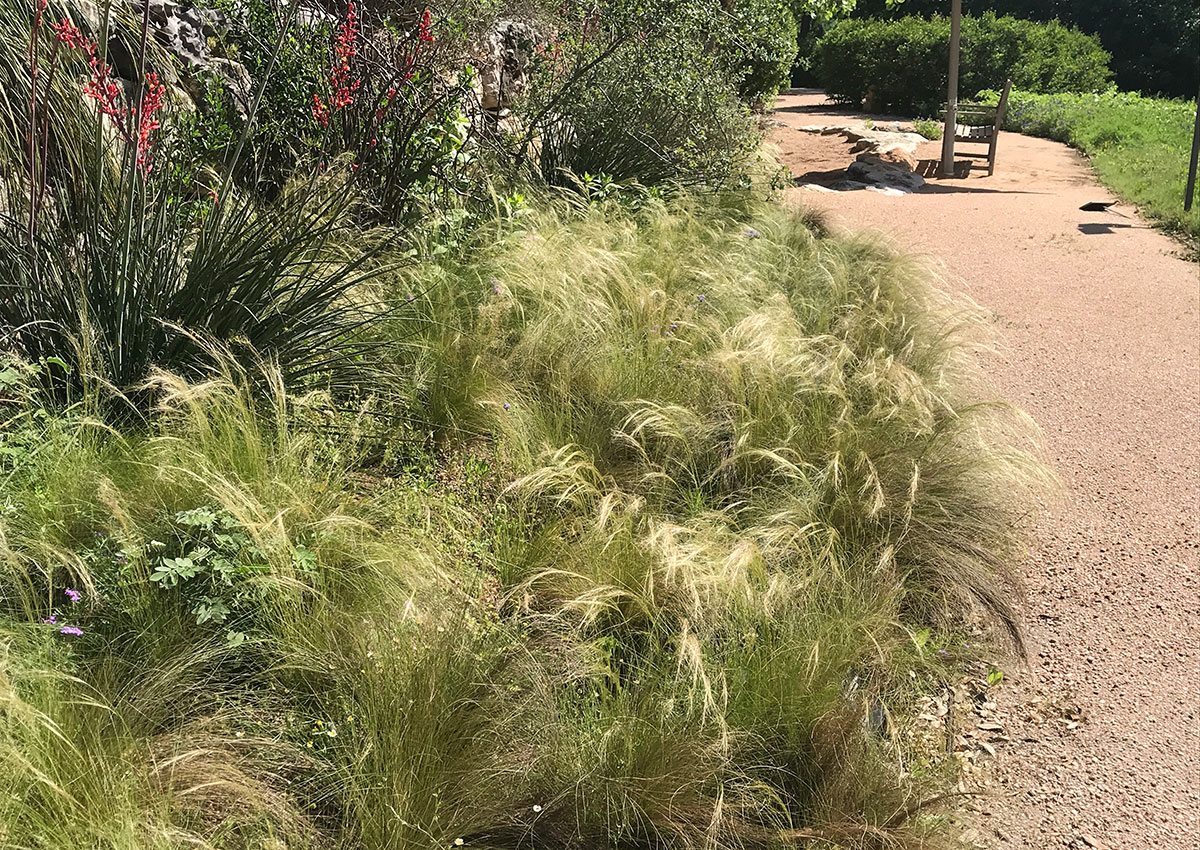
Mexican feather grass
This fine-textured, delicate grass (Nassella tenuissima, Zones 7–10) lends a soft golden touch to rock gardens. Extremely drought tolerant, it grows in clumps about 2 feet tall and equally wide. Individual leaves are extremely fine and feathery, which causes them to move gently with even the slightest breeze. Mexican feather grass is deer resistant and goes dormant during drought and in winter. It can be invasive in some parts of California, so it is not recommended for use there. In the Southern Plains, however, it is a lovely addition to rock gardens and other dry garden beds.

Four-nerve daisy
Four-nerve daisy, also known as hymenoxys (Tetraneuris scaposa var. scaposa, Zones 4–9), provides a pop of color among the rocks. Its narrow gray-green leaves form a clump on a short woody base, with solitary yellow flowers borne aloft on long leafless stalks. Its main bloom season is from March to June, but it will bloom year-round under the right conditions. Naturally occurring from Colorado and Nebraska southward, this perennial will do just fine in the more northern reaches of the Southern Plains (as well as the southern ones).
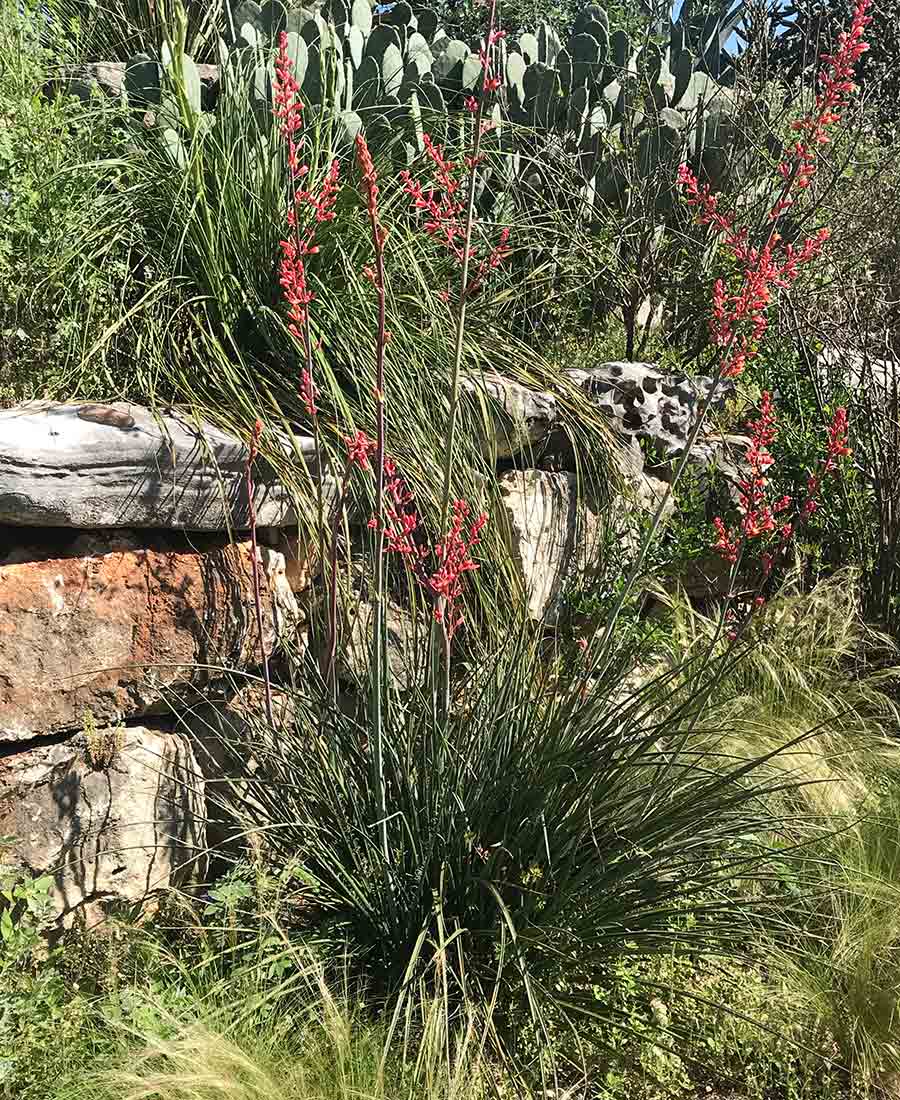
Red yucca
Red yucca (Hesperaloe parviflora, Zones 5–10) is not a yucca at all, but rather a member of the agave (century plant) family. It is the largest of the plants on this list, forming clumps 3 to 4 feet wide and tall. Long, narrow, smooth-edged leaves form a basal rosette. The flower stalks, which can easily reach 5 feet tall, bear numerous coral-red flowers all along their length. They typically bloom from March through July, but the dried flower stalks can provide visual interest even after they have faded and dried. Deer will not eat the stiff foliage, but they will happily nibble down the flower stalks like giant asparagus spears. Red yucca actually has a yellow variety (H. parviflora ‘Yellow’), which is identical in size and form to the original red but bears butter-yellow flowers instead of the usual coral red. Another variety, Brakelights® (H. parviflora ‘Perpa’), is more compact than the typical red and has bright red, show-stopping flowers. All varieties are excellent, bold choices for rock gardens. While their native distribution is from central Texas south into Mexico, they are surprisingly cold hardy up to Zone 5.
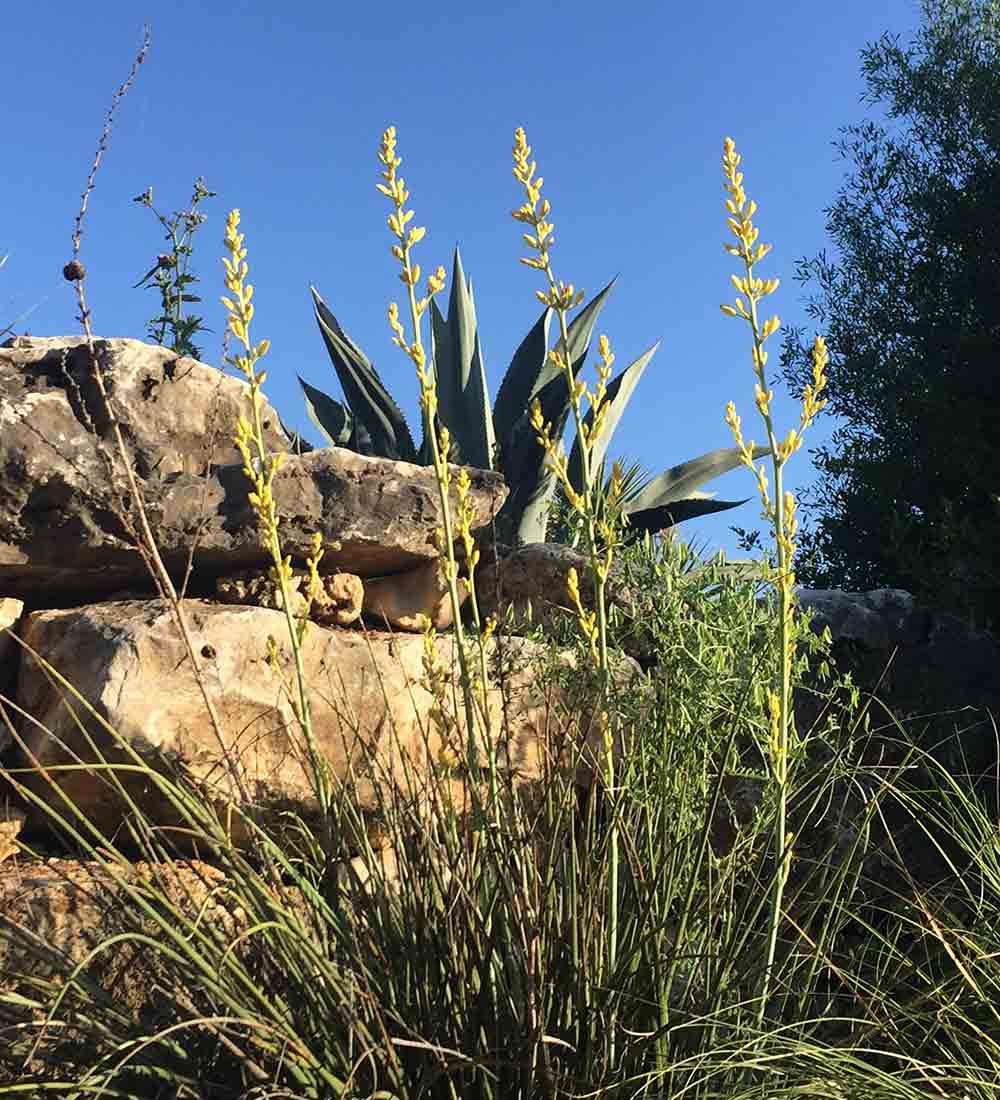
All of these species are rock stars for the rock garden. They are all hardy and dependable and require little to no additional water once established. All five do well in full sun but also tolerate partial shade. Look for one or more of these species the next time you need to fill a space in your Southern Plains rock garden.
—Karen Beaty is a horticulturalist at the Lady Bird Johnson Wildflower Center in Austin, Texas.
Fine Gardening Recommended Products

SHOWA Atlas 370B Nitrile Palm Coating Gloves, Black, Medium (Pack of 12 Pairs)
Fine Gardening receives a commission for items purchased through links on this site, including Amazon Associates and other affiliate advertising programs.

Attracting Beneficial Bugs to Your Garden, Revised and Updated Second Edition: A Natural Approach to Pest Control
Fine Gardening receives a commission for items purchased through links on this site, including Amazon Associates and other affiliate advertising programs.



















Comments
Log in or create an account to post a comment.
Sign up Log in